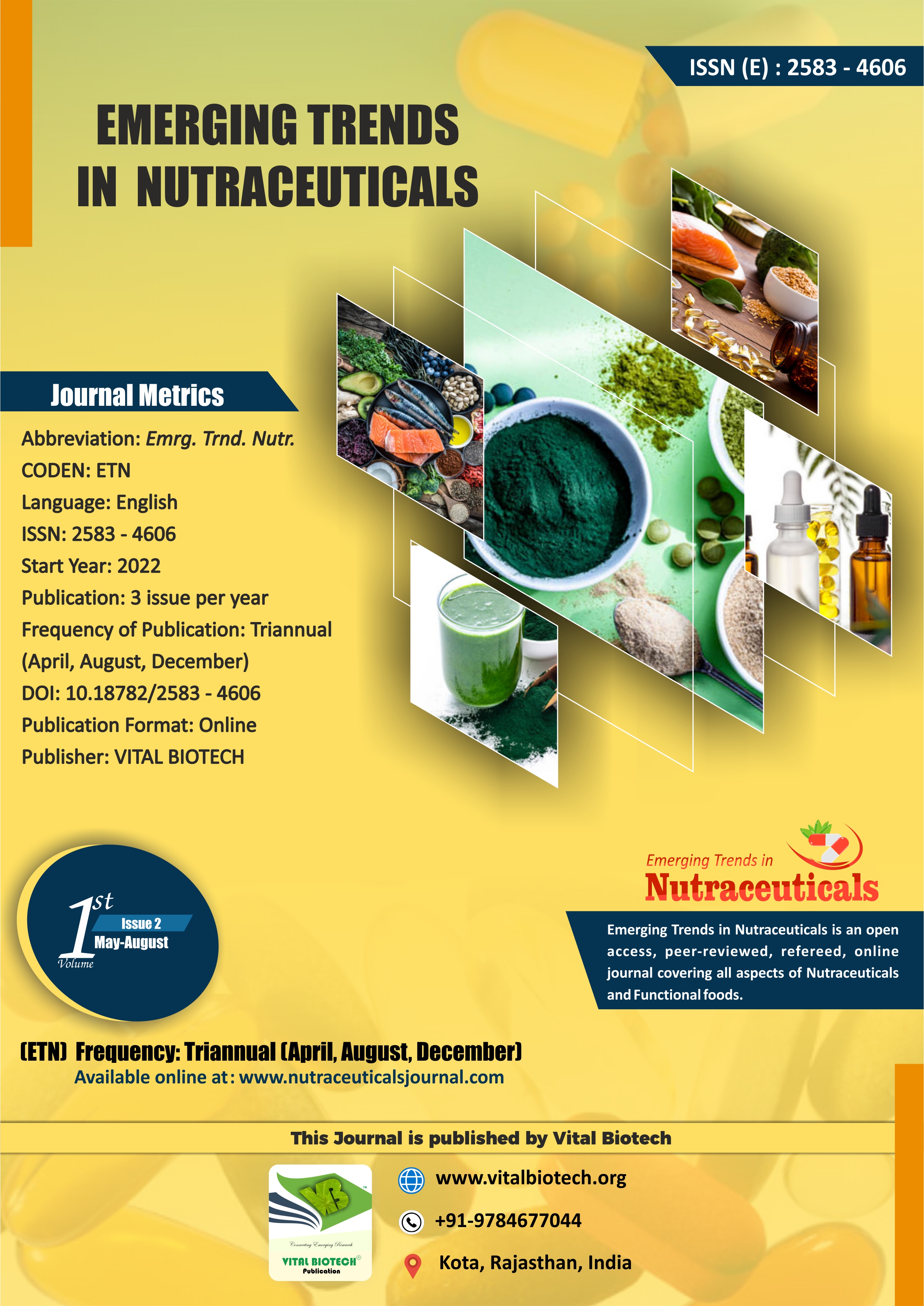
Archives
Emerging Trends in Nutraceuticals (ETN)
Year : 2022, Volume : 1, Issue : 2
First page : (26) Last page : (35)
Article doi: : http://dx.doi.org/10.18782/2583-4606.109
A Comparative Study on the Effect of the Traditional and Industrial Milling on the Nutritional Composition of Sorghum, Pearl Millet and Wheat Flour
Soumitra Tiwari1, Aakriti Singh2* and Jitendra Mehta31,2Department of Food Processing and Technology,
Atal Bihari Vajpayee Vishwavidyalaya, Bilaspur, Chhattisgarh
3Vitаl Biоteсh Reseаrсh аnd Trаining Institute, Kоtа, Rаjаsthаn 324009, Indiа
*Corresponding Author E-mail: aakriti.singh.sisodiya9@gmail.com
Received: 10.06.2022 | Revised: 30.07.2022 | Accepted: 17.08.2022
ABSTRACT
Pearl millet, sorghum, wheat is a staple food in India. It is milled into flour by traditional and industrial dry milling processes. This research was conducted to help determine how to improve the nutritional value and acceptability of pearl millet. The traditional milling step has lowers the pH of kernels. The effects of the traditional and industrial “dry milling” processes on the physical and nutritional composition of grain were compared. Regarding comparing the milling processes, was conditioned and decorticated traditionally with a millstone and industrially with an roller mille. The traditional decorticated grain was steeped and sun dried for 24 h before milling, whereas the industrially decorticated grain was roller milled. Proximate analyses were conducted on the samples. The traditionally milled flour was lighter in colour than industrial milled flour. However, it was significantly lower in protein, ash and nutrient contents in comparison to industrial milled flour. This was due to the removal of more pericarp and germ in the traditional process. The industrial dry milling process, therefore, produces flour with a higher nutrient content in terms of protein, fat and minerals. However, the traditional milling process makes the colour of the pearl millet flour lighter, which is probably the reason that it is more acceptable to consumers.
Keywords: Pearl millet, Sorghum, Wheat, Traditional and Industrial “dry milling
Full Text : PDF; Journal doi : http://dx.doi.org/10.18782
Cite this article: Tiwari, S., Singh, A. S., & Mehta, J. (2022). A Comparative Study on the Effect of the Traditional and Industrial Milling on the Nutritional Composition of Sorghum, Pearl Millet and Wheat Flour, Emrg. Trnd. Nutr. 1(2), 26-35. doi: http://dx.doi.org/10.18782/2583-4606.109

